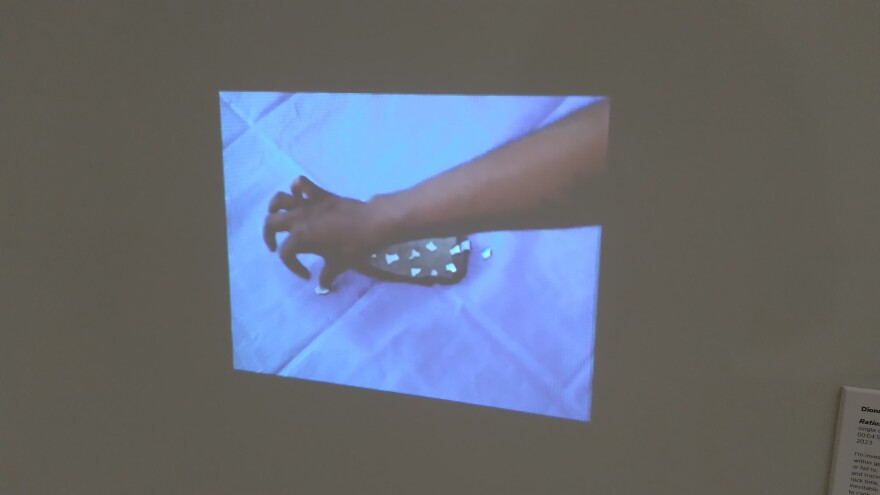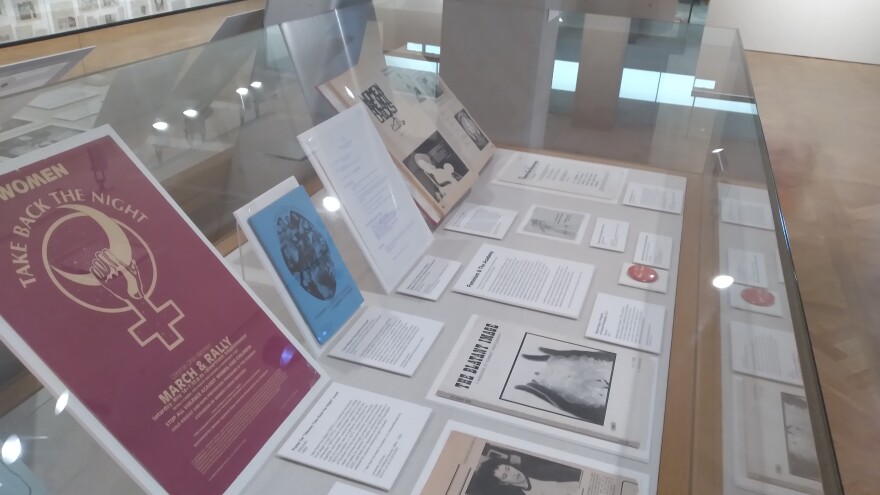Works by seven contemporary feminist artists are on display at OSU in an exhibition that tells the story of art and feminism at Ohio State University in the 1960s, 70s and 80s.
features the first showings of artworks by contemporary artists, along with a collection of Second-Wave Feminist posters from the 1960s and ‘70s and letters, placards and artist books made during the 1980s by artists affiliated with Ohio State. Abject Object also chronicles the wealth of feminist art exhibitions and events that took place at OSU even as Second-Wave Feminism ebbed nationwide in the 1980s.
The exhibition is on display in OSU’s Thompson Library Gallery through Jan. 7, 2024.
Curator Courtney Hunt, art and design librarian and assistant professor with OSU Libraries, says she wanted the exhibition to feature the range of contemporary feminist artwork “front and center.”
“The thing about feminism and art, I think, that makes it so interesting is that the interpretations can be so varied,” Hunt said.
The contemporary artworks present a range of ideas about women, womanhood, the body and feminist history in a variety of artistic mediums. Two works by Brianna Gluszak, a lecturer in OSU’s Department of Art – a tufted rug entitled My Eyes Are Up Here and a neon wall sculpture called W-HOLE – respond to common conceptions of the body, identity and the gaze.
Also in the exhibit is a tapestry of obituaries of high-profile women hand annotated by Carmen Winant, Roy Lichtenstein chair of studio art at Ohio State. Paloma Martínez-Cruz, professor of Latinx Cultural Studies at OSU, and Columbus-based artist brian ortiz collaborated on Chicomecoatl/Chicana Bloodyore of Yore Living Altar. They invite viewers to activate the living altar by making offerings of corn and corn products in honor of Chicomecoatl, the Mexica people’s goddess of the harvest during Mesoamerica’s post-classic period.
New works by photographer Gina Osterloh, an associate professor in OSU's Department of Art, explore shapes and the body, gender fluidity and woman-identifying subjectivities. A video piece by photographer and video artist Dionne Lee, assistant professor in OSU’s Departments of Art and Women’s, Gender and Sexuality Studies, explores humankind’s relation to the landscape. A series of prints by photographer Annelise Duque seeks to communicate often mystical meaning found in exterior and interior landscapes and in what she calls “the in-between.”

Archival materials from the 1960s, ‘70s and ‘80s situate the contemporary artworks in Abject Object in the context of Second-Wave Feminism. Those materials include the OSU Rare Books and Manuscripts Collection’s trove of feminist posters produced during the 1970s by the Chicago Women’s Graphic Collective and the Boston Women’s Graphic Collective.
The silkscreen posters, Hunt says, were intended to engage people with the idea of equality for women and changing the language around women. One of the posters reads, “Women are not chicks,” another reads, “Don’t call me girl.”
“They are really trying to get out a political message but also empower women at the same time, in visually striking ways,” Hunt said.
Hunt also drew on the vast materials at Ohio State University Libraries and University Archives chronicling feminist exhibitions and other events at OSU. Those holdings include materials on topics within feminism that were included in exhibitions during the 1980s at University Gallery, the predecessor to OSU’s Wexner Center for the Arts, and curated by University Gallery’s director Jonathan Green and assistant director Stephanie Blackwood.
“The program was very activist,” said Hunt. “They did an exhibition on the AIDS epidemic. They did an exhibition on the topic of rape. They did an exhibition guest curated by feminist critic Lucy Lippard called All’s Fair: Love and War in New Feminist Art, and that was also another jumping off point for me.”
Abject Object is an opportunity to learn about feminist activity at OSU. But more importantly, Hunt says, the exhibition is an occasion to reflect on where feminism has been, where it is now and where it could be going – on campus, in Columbus and across the nation.
“This (exhibition) is a conversation,” Hunt said, “it’s ongoing.”
is on exhibit in OSU’s Thompson Library Gallery through Jan. 7, 2024.



